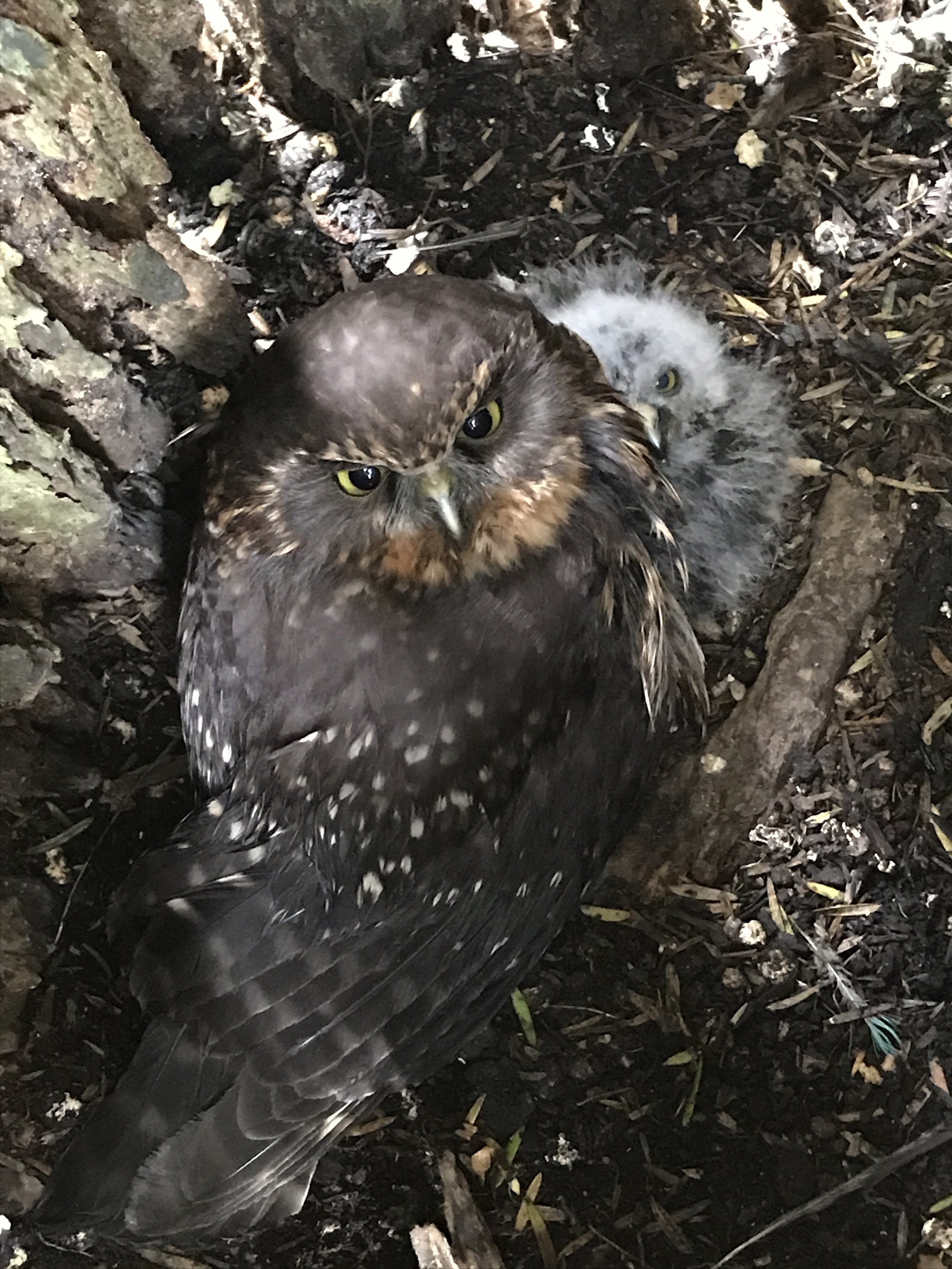A Nesting of Ruru
Parent with chicks
One of the rewards of working in our local bush reserves is seeing the burgeoning native birdlife, evidence (both audible and visible) of the results of the intensive predator control that has been undertaken in the local area over the past few years.
One special treat has been observing a nesting pair of ruru (morepork) these past two years, and we wanted to share a few of the many delightful moments that we’ve caught using our cameras normally used to monitor for predators.
The ruru is our native owl, endemic to NZ, and thankfully not threatened, despite being a ground-nesting bird.
Ruru are predominantly nocturnal, but they can sometimes be seen during the daytime, swooping silently past you as you walk along the track. Their eerily silent flight is due to their flight feathers having serrated or comb like edges that reduce air turbulence over the wings, which are short and broad, allowing them to easily move through dense bush, hunting for insects, small mammals (mice and rats) and other birds.
Each nesting sees an average of two eggs, laid between September and November. The female then incubates the eggs while the male catches food for her. The eggs hatch after 20-30 days, and the female remains on the nest until the owlets are fully feathered. During the nesting period, both parents work hard every night (see videos below) to feed the chicks which fledge after a month. After fledging, the chicks remain dependent on their parents for a further two months. Ruru live for about 6 years, and can breed each season.
Check out more details on the DOC website here and on NZ Birds Online here
The gallery below shows a number of images captured of one of our ruru nests, showing the progression from eggs, to chicks, to the fledgelings in the trees.







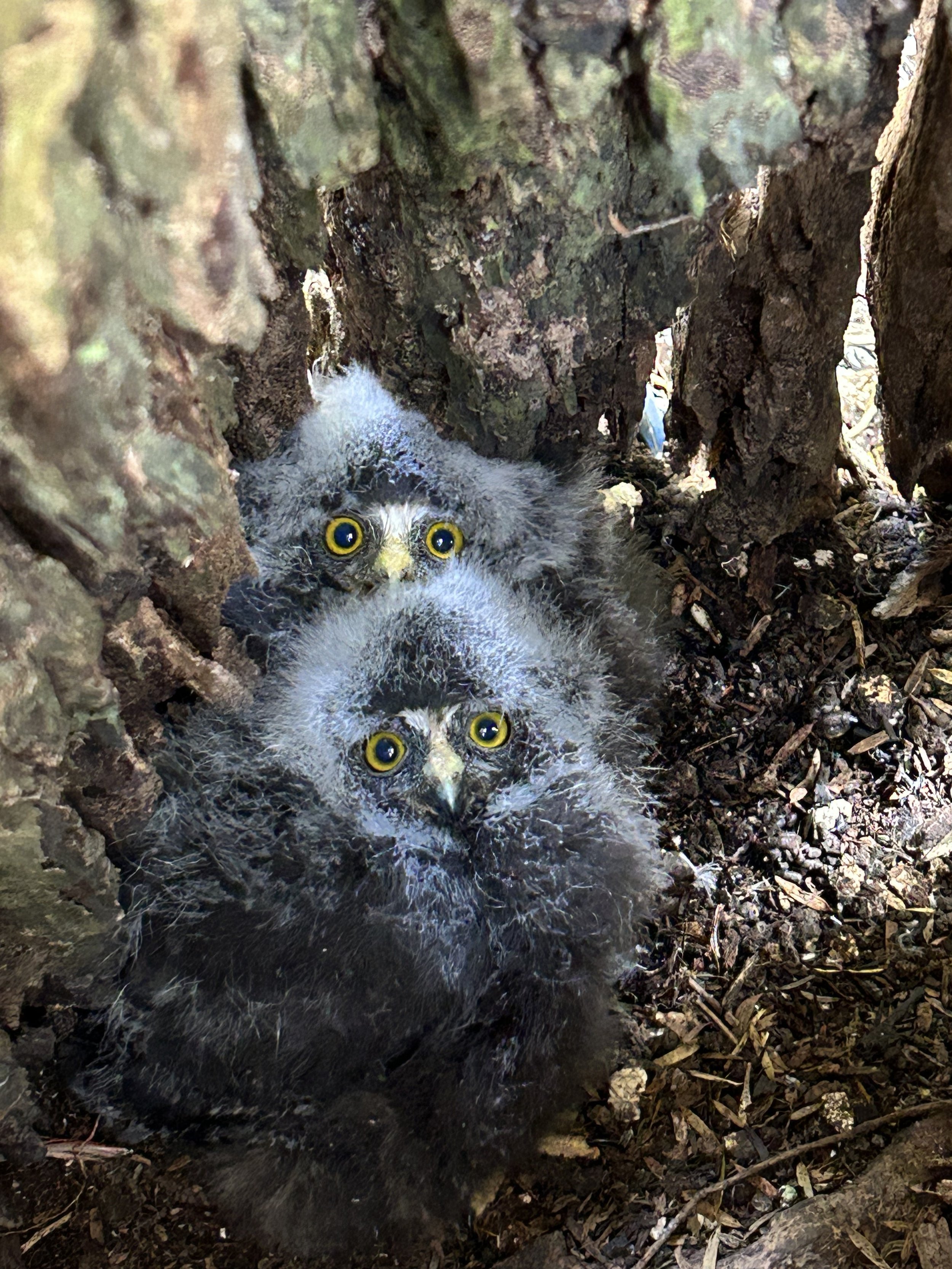
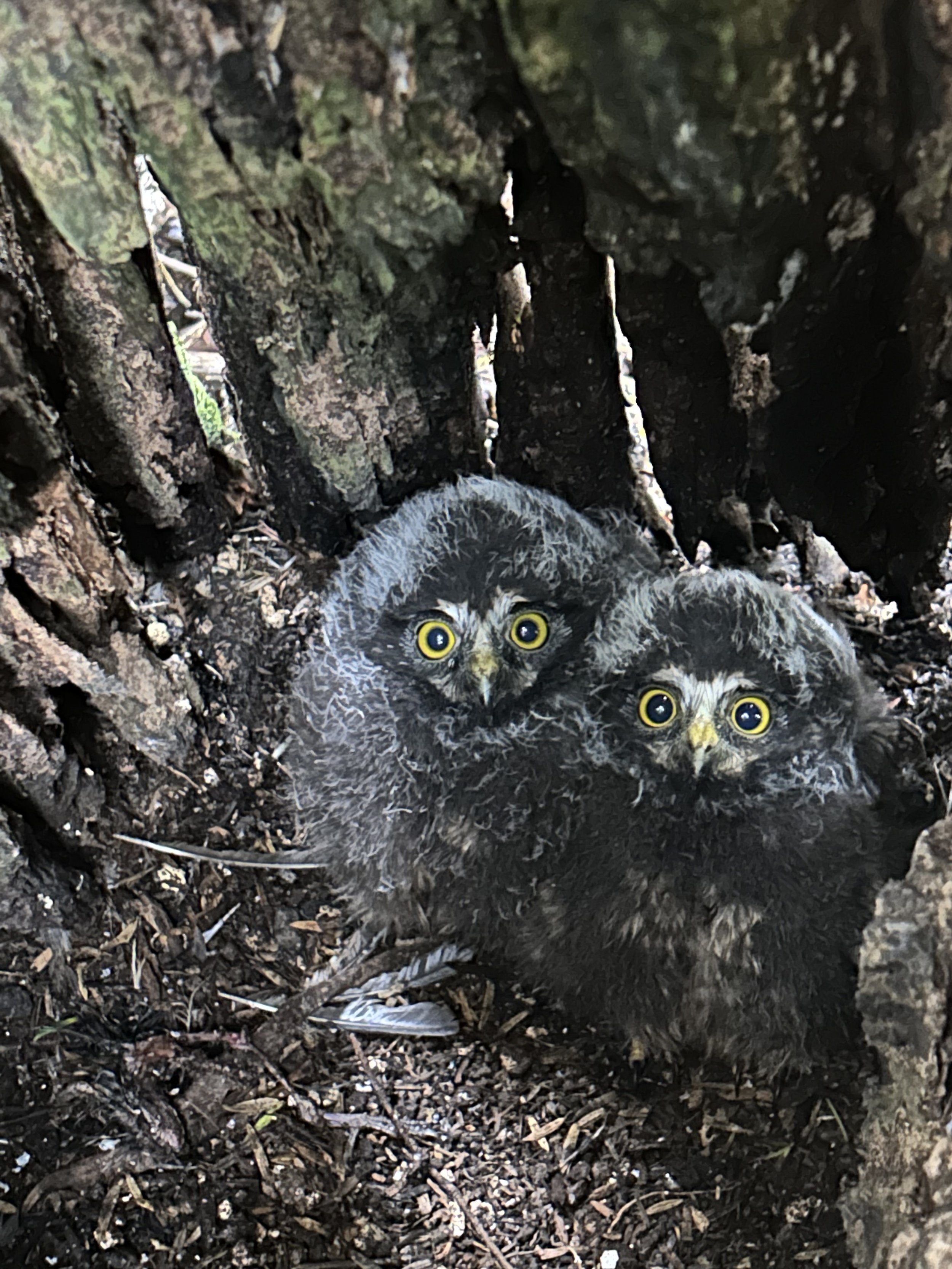
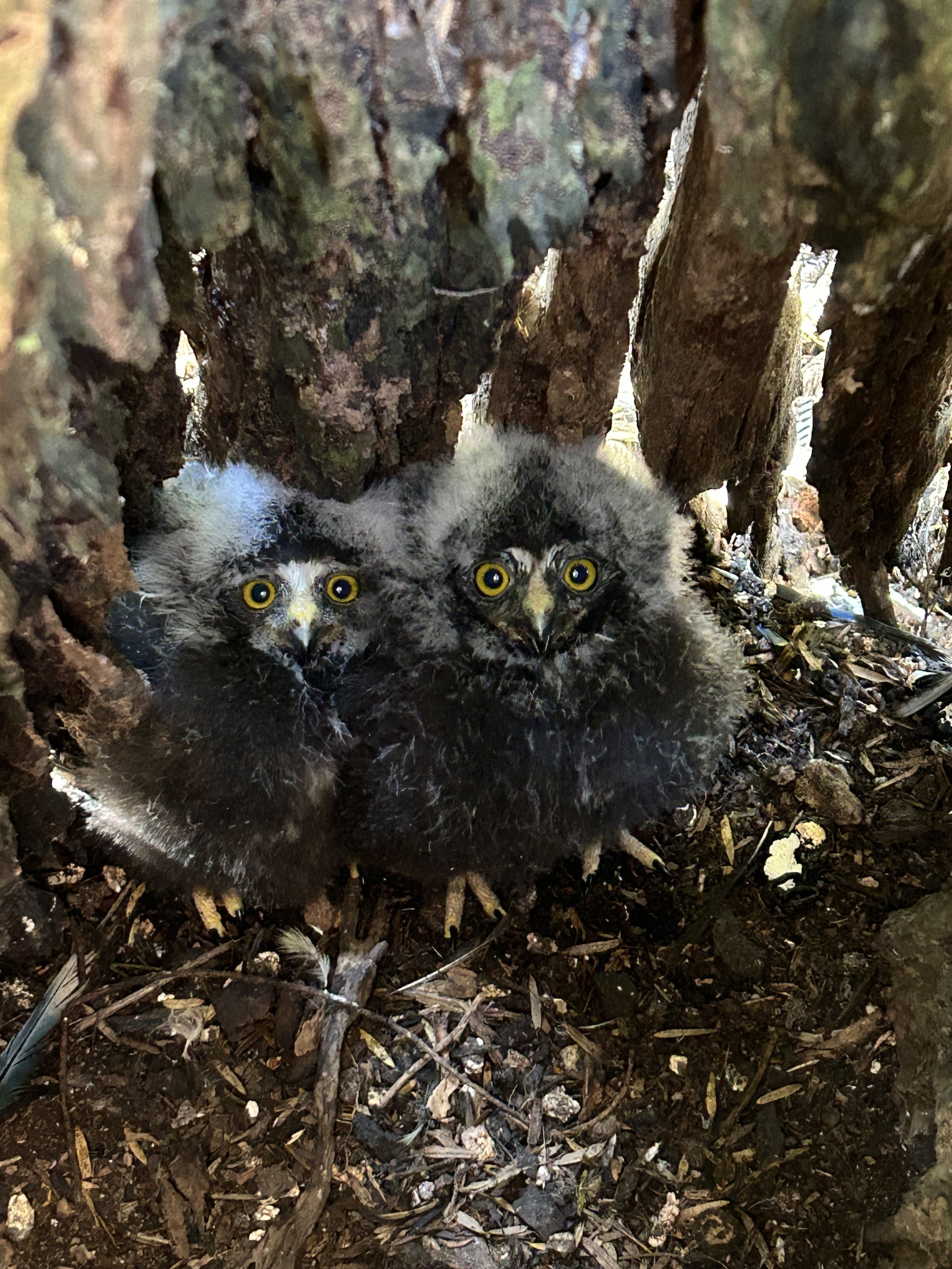
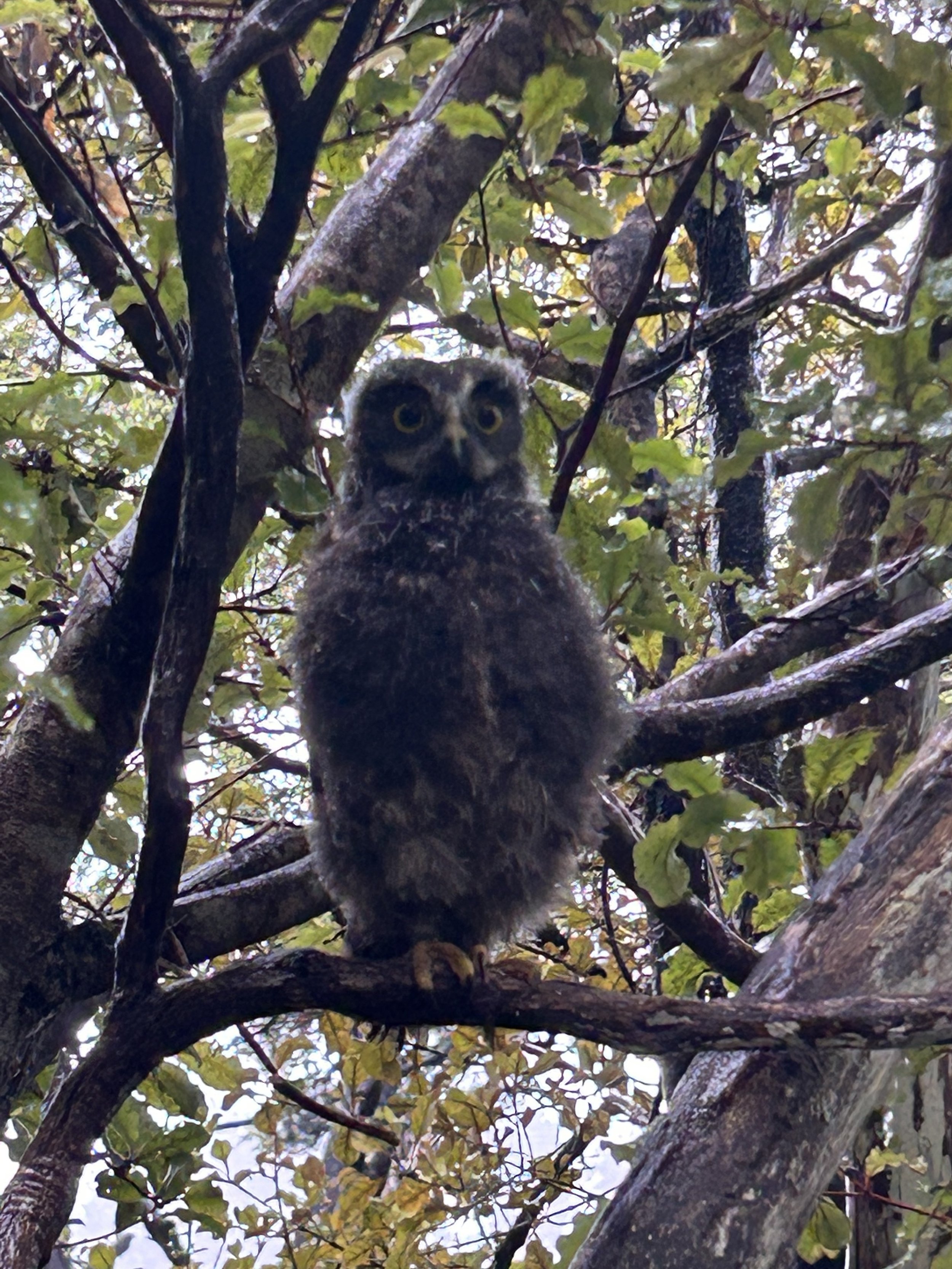
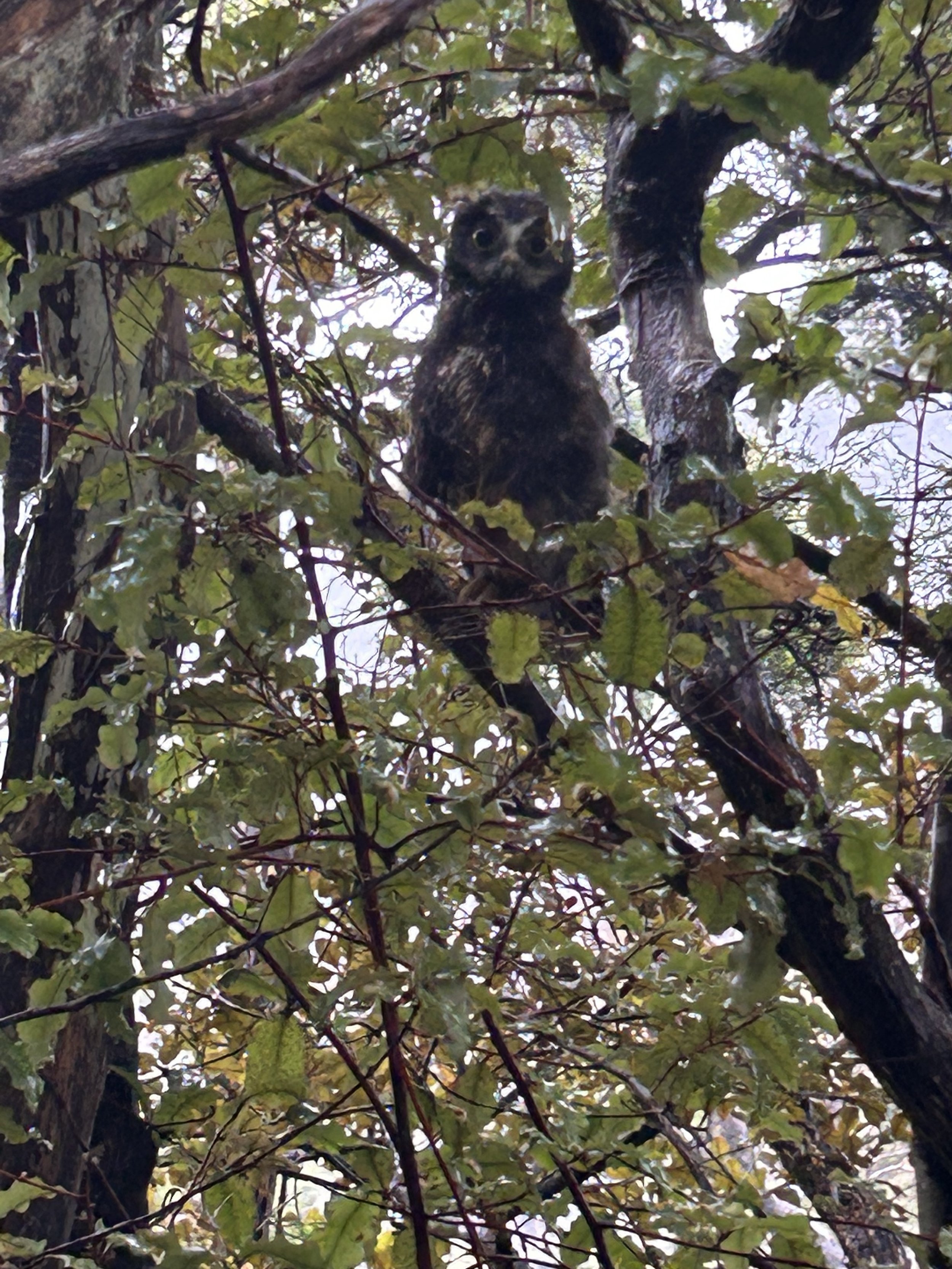
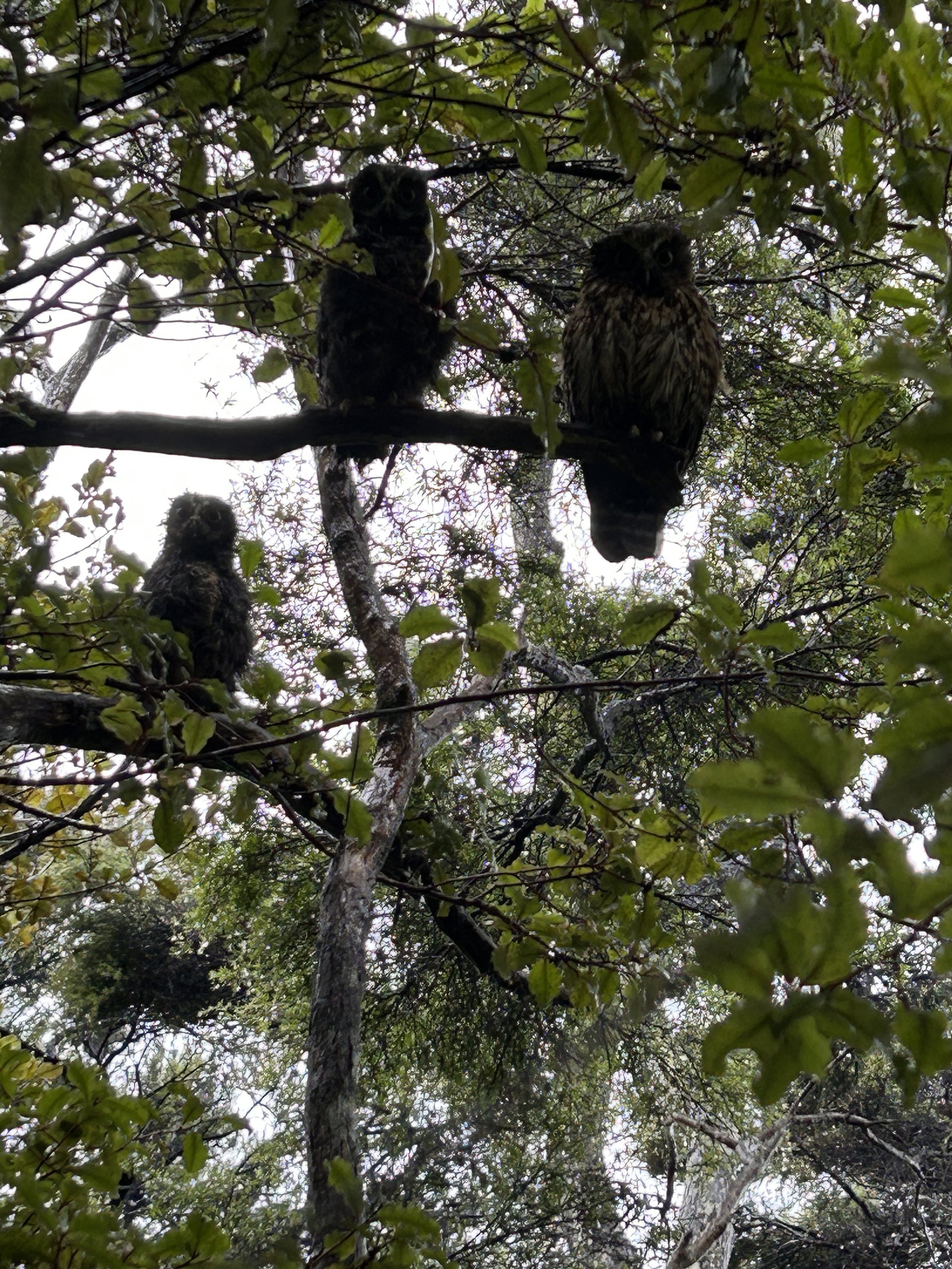
Ruru Calls
Most people are familiar with the ruru’s iconic “more-pork” call, which can be heard throughout the night. However, they also have several other “warm-up” calls, these include “yelping”, “croaking”, “mewing”, and also a “cree” call that is often mistaken for kiwi.
Below are some audio files of the various calls of the ruru
Māori tradition
In Māori tradition the morepork was seen as a watchful guardian. It belonged to the spirit world as it is a bird of the night. Although the more-pork or ruru call was thought to be a good sign, the high pitched, piercing, ‘yelp’ call was thought to be an ominous forewarning of bad news or events.
Night Feeding Frenzy
During the last two breeding seasons, we placed a camera facing the nest site to observe the activity around the nest.
What we saw was an amazing flurry of activity each night, with the parent birds venturing out on numerous flights to catch prey, returning to the nest with their catch to feed the chicks
The link below takes you to a video compilation of 71 individual 10 second videos taken on the night of 13 Dec 22, showing the parent birds emerging from and returning to the nest that night - sometimes several times in the same minute. It might take you 15 mins to watch all the videos, but it’s an amazing insight into how hard these birds work to rear their young. There are some highlights within the compilation.
Click here to view the videos on YouTube.
Heads up - the individual videos may look like duplicates, but each is a unique movement in and out of the nest - as shown by the logged timestamps.
Predators
Images captured in 2021 also showed regular visits to the nest site by possums and rats - which inspired us to place several traps around the nest in an attempt to protect the birds.
The video compilation attached gives you an idea of the threat our native birds face from these predators - although we were thankful that no harm came to the birds and we’ve seen two chicks successfully reared in both seasons. In fact images in 2022 showed no predators visiting the nest, proving the value in the intensive predator control work being undertaken in the reserve and surrounding bush.
Click here to view the videos on YouTube.
One final word - humans can be predators as well - even unintentionally.
Our camera captured a group of visitors in January who got way too close, leaning on the nest and even reaching down into the nest to touch the chicks.
The ruru are wild animals, a precious part of our native fauna, and they deserve our respect and protection.
If you are walking through the bush and come across a nest - please keep a distance - do not approach the nest and do not handle the chicks.
